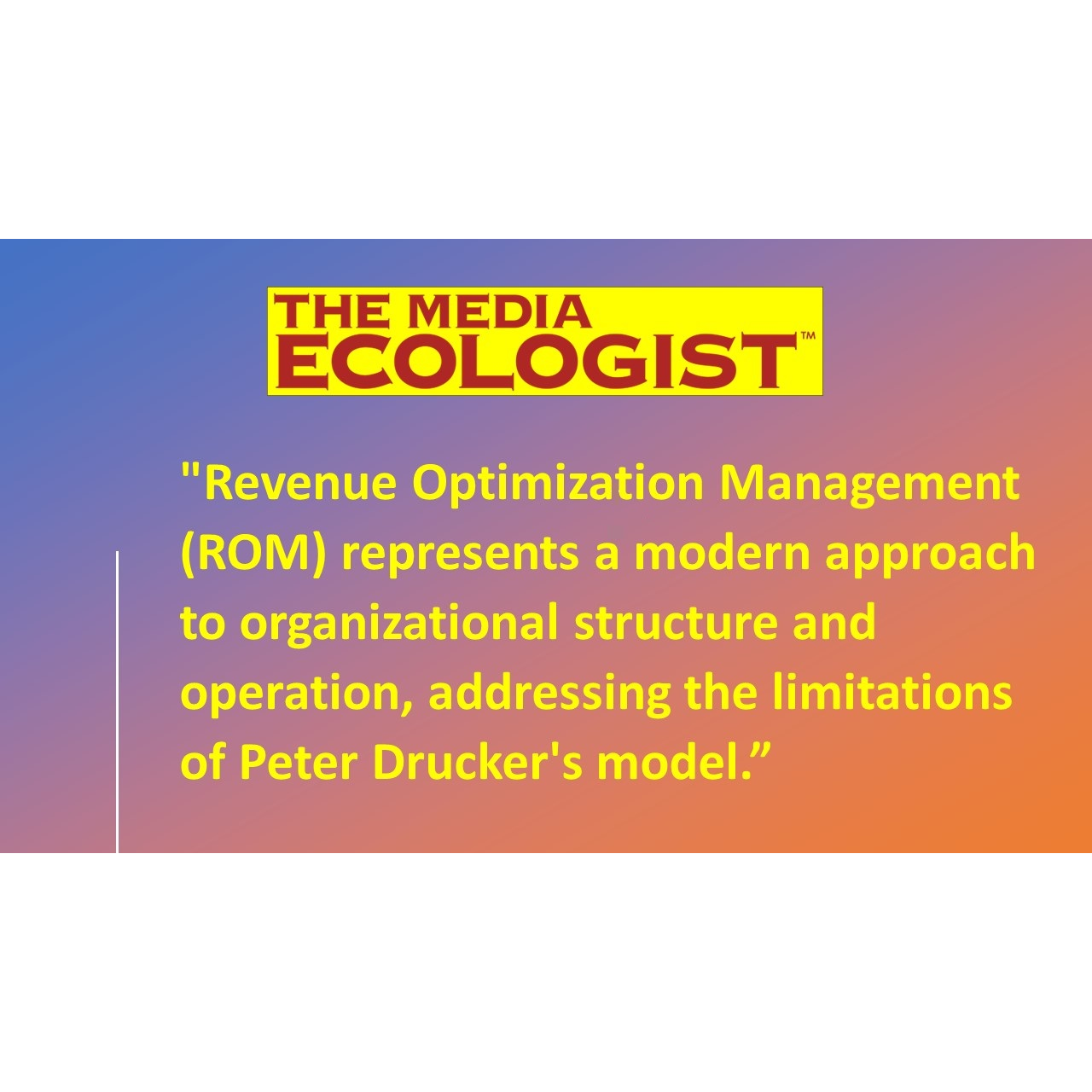From Drucker to the Digital Age: Imperative of Revenue Optimization Management (ROM)

Drucker's "Concept of the Corporation"
Peter Drucker, in his seminal work "Concept of the Corporation," introduced the idea of a corporation as a social institution, emphasizing the importance of decentralized decision-making, management by objectives, and the role of knowledge workers. His vision shaped many 20th-century organizations, emphasizing a systematic approach to management and the importance of the human factor in corporate structures.
Limitations in the Digital Age
While Drucker's principles were groundbreaking in their time, several factors make them less suitable for today's rapidly changing, digitally driven corporate landscape:
1. Speed of Change: The pace of technological and market change is vastly quicker than in Drucker's era. Decentralized decision-making, though it promotes autonomy, can sometimes slow down the agility required in today's digital age.
2. Digital Transformation: Modern organizations are increasingly reliant on technology, automation, and data analytics, reducing the centrality of human-based processes and rendering some of Drucker's human-centric ideas less immediately applicable.
3. Emergence of New Business Models: The rise of platform-based businesses, the gig economy, and digital-first enterprises doesn't fit neatly into Drucker's model of the corporation.
4. Globalized Business Landscape: Today's corporations operate in a deeply interconnected global environment, necessitating more integrated and adaptable structures than the more localized models Drucker might have envisioned.
The New Corporate Concept
Revenue Optimization Management (ROM) represents a modern approach to organizational structure and operation, addressing the limitations of Drucker's model:
1. Organizational Realignment: While Drucker emphasized decentralization, ROM underscores the need for strategic alignment to ensure quick, data-informed decision-making, marrying the benefits of autonomy with the agility of centralized strategy when necessary.
2. Future Organizational Structure: ROM emphasizes structures that are digital-first, agile, and adaptable to rapid market changes. This contrasts with Drucker's model which, while revolutionary, was still rooted in a slower paced, less technologically driven era.
3. Integration Over Silos: Decentralized silos, a natural outcome of Drucker's approach, can impede communication and alignment in today's interconnected business world. ROM champions the integration of these silos, fostering collaboration and streamlined operations.
4. Budget Reallocation: In the ROM paradigm, budgeting isn't just about allocating funds based on historical success but involves proactively investing in digital tools, technologies, and strategies that align with modern B2B dynamics, especially sales and marketing.
Peter Drucker's "Concept of the Corporation" was visionary for its time, laying the foundation for many 20th-century corporate successes. However, in the face of today's digital, globalized, and rapidly evolving business environment, there's a need for a refreshed corporate concept. Revenue Optimization Management offers a roadmap for modern corporations, emphasizing agility, digital integration, and strategic alignment, ensuring that businesses are not just reactive but remain at the forefront of their industries.
For a deeper understanding of the dynamics of organizational reimagining, book a conversation with Jack Myers at https://calendly.com/jackmyers.


